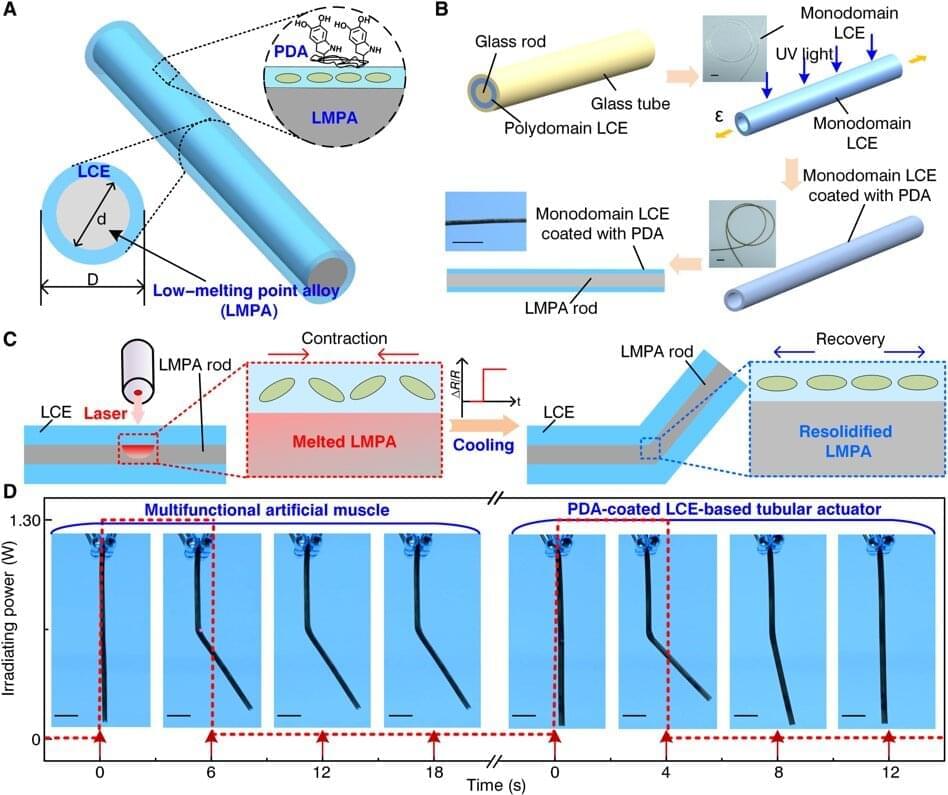Materials scientists and bioengineers at the intersection of regenerative medicine and bioinspired materials seek to develop shape-programmable artificial muscles with self-sensing capabilities for applications in medicine. In a new report now published in Science Advances, Haoran Liu and a team of researchers in systems and communications engineering at the Frontier Institute of Science and Technology, Jiaotong University, China, were inspired by the coupled behavior of muscles, bones, and nerve systems of mammals and other living organisms to create a multifunctional artificial muscle in the lab. The construct contained polydopamine-coated liquid crystal elastomer (LCE) and low-melting point alloys (LMPA) in a concentric tube or rod. While the team adopted the outer liquid crystal-elastomer to mimic reversible contraction and recovery, they implemented the inner low-melting point alloy for deformation locking and to detect resistance mechanics, much like bone and nerve functions, respectively. The artificial muscle demonstrated a range of performances, including regulated bending and deformation to support heavy objects, and is a direct and effective approach to the design of biomimetic soft devices.
Soft robotics inspired by the skeleton–muscle–nerve system
Scientists aim to implement biocompatibility between soft robotic elements and human beings for assisted movement and high load-bearing capacity; however, such efforts are challenging. Most traditional robots are still in use in industrial, agricultural and aerospace settings for high-precision sensor-based, load-bearing applications. Several functional soft robots contrastingly depend on materials to improve the security of human-machine interactions. Soft robots are therefore complementary to hard robots and have tremendous potential for applications. Biomimetic constructs have also provided alternative inspiration to emulate the skeleton-muscle-nerve system to facilitate agile movement and quick reaction or thinking, with a unique body shape to fit tasks and perform diverse physiological functions. In this work, Liu et al were inspired by the fascinating idea of biomimicry to develop multifunctional artificial muscles for smart applications.
